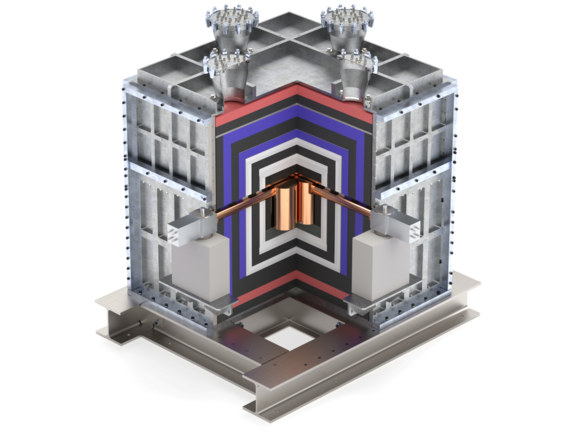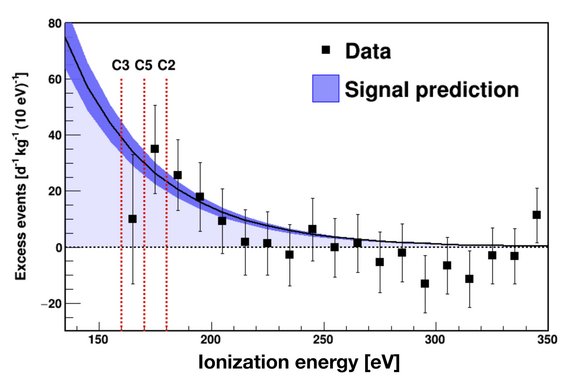Neutrinos are subatomic particles that are almost massless and only interact with matter very faintly via the weak interaction. They are, however, a very substantial part of the standard model of particle physics that is used to explain the building blocks and forces within our universe and therefore a fascinating subject for research in particle physics and astrophysics. Due to their properties, neutrinos can pass almost unhindered through normal matter, which makes their detection not straightforward and requires elaborate experimental setups. One of these would be “Coherent Elastic Neutrino-Nucleus Scattering” (CEvNS), that was predicted in 1974. It took, however, until 2017 before it was observed by the COHERENT experiment with partially-coherent scattering neutrinos from accelerator-based pion decays at rest. In 2024, results were obtained by the XENONnT and PandaX dark matter experiments indicating that neutrinos from the Sun have been detected via CEνNS. Now CONUS+, an experiment situated at the Leibstadt nuclear power plant in Switzerland, has observed CEvNS for the first time with anti-neutrinos from a nuclear reactor at low energies in the fully coherent regime.
CEvNS is a special process where neutrinos do not interact with individual quarks or neutrons, but fully-coherent with the whole nucleus via the exchange of a Z-boson. This enhances the probability to interact with nuclei by several orders of magnitude compared to all other neutrino interaction channels. CEvNS requires, however, a sufficiently long wavelength which translates into neutrino energies below about 50 MeV. COHERENT used neutrinos with energies close to this bound to detect CEvNS where the coherence condition is only partially fulfilled such that the nuclear structure (the so-called form factor) still plays a role. CONUS+ uses reactor anti-neutrinos with energies below 10 MeV in the fully coherent regime such that the result does not depend on the structure of the nucleus. The CEvNS measurements of CONUS+ allow to directly limit or even to determine any kind of new physics that would modify the scattering cross section as given by the Standard Model of particle physics. The current results, and further improved results from upcoming experimental runs, are therefore a powerful tool to search for new physics in a unique way.
For the current result, the CONUS+ detector has used four 1 kg germanium diodes with very small detection thresholds allowing for the first time the observation of tiny recoil energy events induced by CEvNS of reactor anti-neutrinos. CONUS+ has meanwhile been upgraded to new 2.4 kg detectors which have again an improved lower energy threshold. The ongoing second data taking period will therefore not only double the data set, but is expected to significantly improve the results later this year. The technology of CONUS+ is established and could be scaled up by another factor of 10 in detector mass. This implies that the long-lasting route towards an observation of CEνNS will foreseeably turn into an exciting new area with precision measurements of CEvNS. This has by itself a very significant physics potential and even more in combination with expected improvements of beam experiments using pion decays at rest or next generation dark matter detectors with solar neutrinos.
Weblinks:

